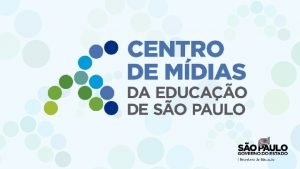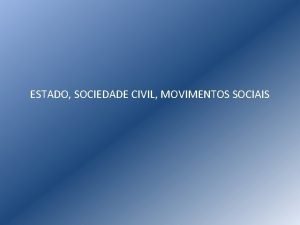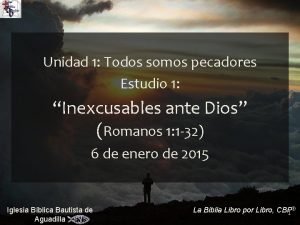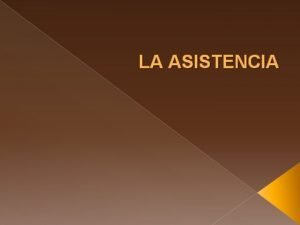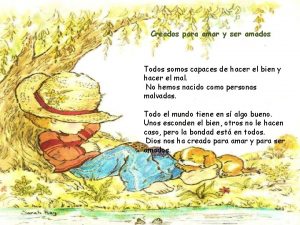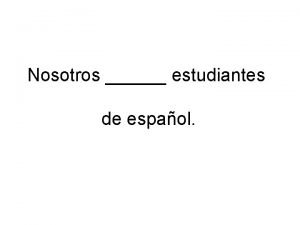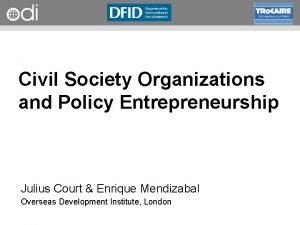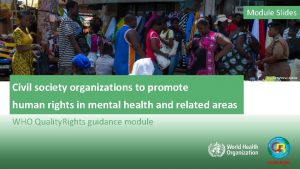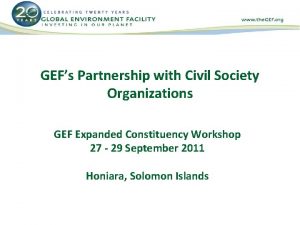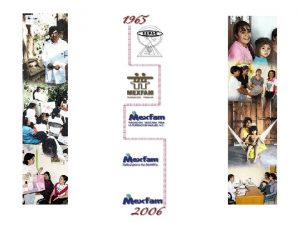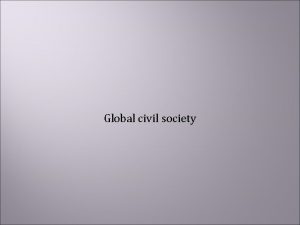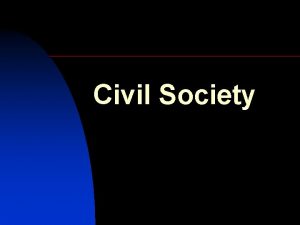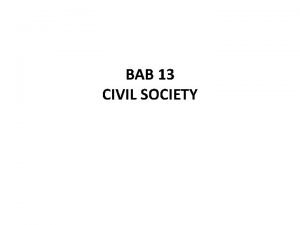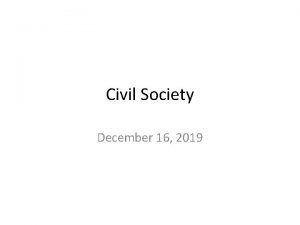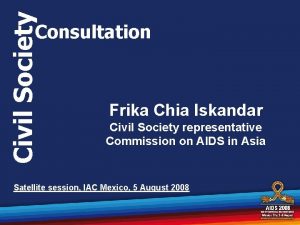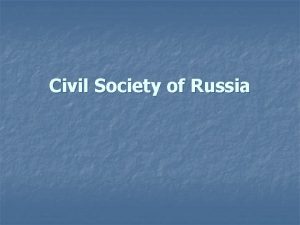Sociedade civil Somos todos ns Civil Society Development



















- Slides: 19

“¿Sociedade civil? Somos todos nós!” Civil Society, Development and Social Transformation in Mozambique Tanja Kleibl, Dublin City University, DSAI Conference 2015

Content: 1. 2. 3. 4. Research Framework State – Society Data collection Zambezia Province and case study district Inhassunge 5. People’s responses 6. Mistaken assumptions 7. Politics of place and questioning of hegemony

1. Research Framework Main research question: What are the main and overlapping concepts of civil society present in Mozambique? Who participates and who is excluded, why? Sub-question: How do marginalized citizens react in situations where they can’t organize social protest, where state power and control is overwhelming? Research approach: Qualitative research guided by grounded theory Evolving research theme and questions based on theoretical sampling: • Focus on sub-national level • Case study approach at district/locality level



2. State – Society • PARPA – part of ‘governance reform’ – reduces the role of the state and brings it into ‘balance’ with civil society (see also Carter Center 1990, Hyden and Bratton 1992, World Bank 1989, 1992) ASSUMPTION: - Local voluntary associations and ‘grassroots’ organizations will help people to meet their own needs and press their interests against the state. - Democratization, a strong civil society and Development is interconnected

Research Phase 2: Research trip to Maputo, Mozambique: Key informant interviews and mixed focal group discussion: 20 August – 12 September 2014 3. Data collection Maputo city: Number of exploratory interviews: 10 (9 male, 1 female) Number of focus group discussions: 1 (8 male and 1 female participant) Research phase 3: Research trip to Maputo and Quelimane, Mozambique: Key informant interviews, focus group discussion, EU civil society actor mapping and case study development: 1 – 14 February 2015 Maputo city: Number of intensive interviews: 7 (5 male and 2 female) Number of exploratory interviews: 1 (female) Number of exploratory group interview: 1 (2 female, 1 male) Quelimane city, Zambézia province: Number of semi-structured interviews: 1 (male) Number of group-interviews: 2 (4 male) Number of focus group discussions: 3 (26 male and 17 female) Mocuba town, Zambézia province: Number of focus group discussions: 4 (20 participants – gender unknown) TOTAL Interviews (individual and group): 12 TOTAL Focus group discussions: 7 TOTAL research participants: 79 (37 male, 22 female, 20 unknown gender)

Research phase 4: Research trip to Zambezia Province, Mozambique: Intensive individual and group interviews, focus group discussions and observation: 20 March – 18 April 2015 Quelimane City, Zambézia Province: Number of intensive individual interviews: 7 (5 male and 2 female) Mucopia (district town), Inhassunge district, Zambézia Province: Number of intensive individual interviews: 11 (9 male and 2 female) Number of group-interviews: 4 (26 male and 15 female) Gonhane locality, Inhassunge district, Zambézia Province: Number of intensive individual interviews: 5 (2 men and 3 female) Number of group-interviews: 1 (5 men) Bingajira locality, Inhassunge district, Zambézia Province: Number of intensive individual interviews: 7 (6 male and 1 female) Number of group-interviews: 1 (2 male and 1 female) Number of focused community debates: 1 (2 male and 1 female) Olinda locality, Inhassunge district, Zambézia Province: Number of focused community debates: 3 (there was at times a great flux of people joining the group so that it was not possible to take numbers, approximately 20 – 30 people attended each debate whilst the discourse was dominated by community leaders) TOTAL Interviews (individual and group): 36 TOTAL Focused community debates: 4 TOTAL Observations: 14 TOTAL research participants: 82 (57 male, 25 female) Note: The participants of the community debate are not included.

4. Zambezia Province and case study district Inhassunge - Mozambique is a Presidential Republic with centralized decision-making. FRELIMO in power since independence (1975). 16 years of brutal civil war (1976 - 1992). After a one party system (marxist -lenist orientation), constitution reformed, economic reforms and multi-party elections (1994). - Zambezia Province considered as an oppositional place ‘provincia rebelte’. In 2014 elections RENAMO gained majority of votes (also Nampula, Tete, Manica, Sofala).

4. Zambezia Province and case study district Inhassunge - Inhassunge district: population of est. 101. 211 people. - Research focused on Mucopia town and Bingajira, Gonhane as well as Olinda localities. - District is an island, surrounded by river Cuacua and Indian Ocean. - Bloody massacres during the civil war around Mucopia. - Napharama active during civil war - (Outside) people attribute high criminal energy, witchcraft and superstition to the people of Inhassunge. - Provincial NGOs consulted identified witchcraft accusation as the biggest civil society challenge in the province Zambezia, directing us to Inhassunge. - The most recognized district level civil society actor is the ‘nucleo dos pastores’. - Various threats to people’s livelihoods and economic situation over the last 5 – 10 years.

5. People’s responses I: Crisis of representation and Resignation • Loss of citizenship. • Social exclusion and feeling of injustice and impunity • Loss of values and demoralization • Fears • Mistrust against foreigners.

5. People’s responses II: Collective Action through violent protest and conflict, religious revelations • Protest underpinned by violence (visible) and witchcraft (invisible). • Religious and traditional ceremonies creating identity and protection (Increase in religious associations and appreciation of religious leaders).

“A igreja e a minha defesa” (Animador da Justice e Paz, Diocese de Nampula, 03. 08. 2015) “Vale a pena viver sem guerra, e depois só ficar em casa? É uma violência do governo. A população, jovens e outros, não se podem encontrar ou organizar, não é possível, o governo não aceite!” (Anterior Naparama, Bingajira locality, March 2015)

SOCIEDADE CIVIL (Inhassunge district) REALITY - - Civil Society (CS) = Religious society; CS = that’s all of us; CS shall bring Harmony + Peace; CS as church should be in front, defending human rights; Collaboration church and government; CS changes attitudes; Need to mobilize; CS without possiblity to articulate problems; Apolitical religion; CS = cry for help; Inoperational solidarity. THEORY - CS = community leaders, religious leaders, regulos, associations; - Assumes its role; - Supports local justice; - Confronts the problems; - CS = all people that work; - Local citizenship; - Organized structure; - Leadership and sucess.



6. Mistaken Assumptions? • INGOs act as ‘intermediaries’ without social base and representative status. • National NGOs divided into apolitical service-delivery function and advocacy orientated ‘watchdog’ role vice versa the state with no representative status and little relevance at district level. • Membership based civil society organizations increasingly fragmented. • Local associational life and citizens’ engagement affected by political party lines. • ‘Traditional’ representative, the REGULO, often politically coopted, hence provoking a local governance crises. • Religious leaders taking on representative roles

7. POLITICS OF PLACE & QUESTIONING OF HEGEMONY (1/2) 1. Defence of place (land culture) - fundamental motivation for collective action in Mozambique. 2. Topographie of “state and civil society” may no longer be relevant in local politics. 3. Rethinking community into politics of place as well as a flexible space for the evoluation of common social-spiritual values: “We need to conceive places and place-based knowledge and practice not as a legacy of history or geography, but as a project which can construct new contexts for political thinking and the production of knowledge” (Dirlik, 1998)

7. POLITICS OF PLACE & QUESTIONING OF HEGEMONY (2/2) 4. Place becomes essential to the critique of how economic development is advanced, and the imagination of alternatives. 5. Gender, race and ethnicity become both potential dividers and sources of unification. 6. Urgency to consider culture and politics as a prime weapon in the struggle over hegemony. “Defendo o valor económico, mas dou primazia ao politico. Ainda mais, primazia ao homem que vive nas diferentes comunidades da região, que antes de ser regional ou nacional, e étnica e ‘comunitaria’!“ (Ngoenha, 1992)
 Todos diferentes, todos iguais reflexão
Todos diferentes, todos iguais reflexão Estimulada
Estimulada Infinitivo y participio
Infinitivo y participio Todos los hombres somos pecadores
Todos los hombres somos pecadores Todos somos educadores
Todos somos educadores Todos somos responsables de nuestros actos
Todos somos responsables de nuestros actos Todos somos capaces de amar y ser amados
Todos somos capaces de amar y ser amados Todos somos singulares
Todos somos singulares Todos somos marina
Todos somos marina Todos somos pecadores romanos 3 23
Todos somos pecadores romanos 3 23 Ellos ____ de perú.
Ellos ____ de perú. Por que decimos que el ser humano es unico e irrepetible
Por que decimos que el ser humano es unico e irrepetible Que es ser irrepetible
Que es ser irrepetible Todos somos educadores
Todos somos educadores Civil rights and civil liberties webquest
Civil rights and civil liberties webquest Besces
Besces What is civil society organization
What is civil society organization What is civil society organization
What is civil society organization What is civil society organization
What is civil society organization What is civil society organization
What is civil society organization
